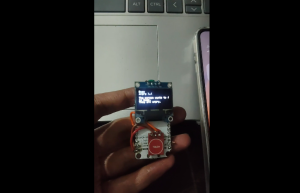Elliot Adler, San Diego local. "America's Finest City." A place defined by its pristine beaches, vibrant culture, and perpetual sunshine. Yet, when the local chatter turns to professional sports, a palpable frustration emerges. Despite a sprawling metro area and passionate fan base, San Diego lacks a modern, world-class arena capable of hosting an NBA or NHL team. It's an issue that sparks countless local debates: why hasn't a developer or the city stepped up to build a venue that could anchor a major league franchise?
The answer isn't a simple lack of ambition; it's a complex, decades-long entanglement of political obstacles, financial risks, and a particularly Californian challenge: the battle over public land and high-stakes real estate. Understanding the current situation requires diving into the history of stadium struggles and the dramatic forces shaping the city's future.
The Core Challenge: A History of Arena Hurdles
San Diego has been home to NBA and NHL franchises in the past. The Rockets (now in Houston) and the Clippers (now in Los Angeles) both played at the aging Pechanga Arena (formerly the San Diego International Sports Arena) before leaving. This history highlights the first, most straightforward challenge: The city lacks a modern, central league-ready facility. The existing arena, built in 1966, is structurally outdated, falling short of the capacity, luxury amenities, and operational requirements necessary for the NBA and NHL today.
However, the real obstacle isn't just the demolition of the old; it's the development of the new. The story of why a replacement hasn't been built boils down to a few critical factors:
The Public Funding vs. Private Risk Debate
Professional sports leagues often seek significant public subsidies for new arenas, arguing that a major team brings economic and cultural benefits to a region. San Diego voters, however, have historically been highly resistant to public financing for private sports ventures. The contentious and ultimately failed campaigns to fund a new Chargers stadium serve as a persistent reminder of this public skepticism. Developers must largely take on the financial risk themselves, a daunting multi-billion-dollar proposition, particularly when securing a team franchise is not a guarantee.
The 30-Foot Coastal Height Limit
One of the most unique and enduring political barriers in the city is the 30-foot coastal height limit. This restriction, dating back to the 1970s, prevents the construction of buildings exceeding 30 feet in height in certain coastal zones.
The most likely site for a new arena, the 48-acre property currently home to the Pechanga Arena in the Midway District, falls squarely within this coastal zone. A modern NBA/NHL arena, which needs to accommodate multiple seating tiers, a massive roof structure, and all the required support infrastructure, typically requires a much greater height.
While San Diego voters approved a measure to lift the height limit for the Midway District, the process has been repeatedly mired in lawsuits and procedural technicalities, stalling progress. This legal and political entanglement has created immense uncertainty, which is kryptonite for large-scale, high-cost development.
Competition and Market Viability
San Diego's proximity to Los Angeles is a double-edged sword. While it provides a vast population base, it also puts the market within the shadow of two established NHL teams (the Ducks and the Kings) and two NBA teams (the Lakers and the Clippers).
League executives often weigh the risk of splitting the Southern California fan and corporate dollar too thinly. They look for undeniable evidence of a standalone market willing to support a new team, a hurdle that an outdated venue makes nearly impossible to clear. Without a modern arena, San Diego cannot credibly enter the conversation about expansion or relocation. As seasoned San Diego real estate developer Elliot Adler has noted, modern professional sports venues are not just buildings; they are economic engines and community hubs. The current facility is unable to fulfill that role.
What It Would Take: Clearing the Path for a New Arena
The good news for San Diego sports fans is that the city is currently closer than it has been in decades to a tangible arena solution. This is primarily centered around the massive redevelopment project at the Midway District site, a plan known as "Midway Rising."
Political Will and Navigating the Height Limit
The Midway Rising proposal, a $3.9 billion vision that includes thousands of homes (a significant portion of which is affordable housing) alongside a modern 16,000-seat entertainment center to replace the old arena, is the city's current focus.
The Power of Mixed-Use Development: The key to this proposal's success is pairing the arena with a massive residential and retail component. By tying the arena to the urgent need for affordable housing, developers can secure political support and leverage state laws designed to fast-track housing projects.
A Clear Path Past the Legal Hurdles: The city must finally and fully address the legal and environmental requirements surrounding the 30-foot height limit. This requires meticulous planning and potentially a third attempt at an environmentally compliant ballot measure or a state-level exemption that withstands judicial review. The repeated court setbacks have underscored the need for the city to be flawlessly thorough in its process.
Developer Credibility and Commitment
A project of this magnitude requires a highly experienced and financially solid development team. The Midway Rising group includes both housing specialists and a major investor whose background in high-stakes sports ownership suggests a genuine commitment to attracting a major league team once the venue is ready.
This level of private-sector dedication is crucial in alleviating the financial concerns of both the city and the professional leagues. As real estate developers like Elliot Adler will attest, the modern real estate equation in California is one of complexity; you must solve multiple civic problems (like housing) to build massive infrastructure. This holistic approach is currently the only viable path to success for a new arena.
Securing an Anchor Team
The ultimate goal remains: the arena must be built with the intent and the specifications to host an NBA or NHL team.
NBA Expansion: The NBA has long been rumored to be considering expansion, with San Diego frequently mentioned as a viable market if it can demonstrate a suitable, modern facility.
NHL Relocation: Although less likely than expansion, a state-of-the-art arena would make San Diego an immediate and attractive relocation target should a financially struggling NHL team in another market become available.
The modern arena is the foundational piece. It acts as the ultimate signal to professional sports commissioners that San Diego is serious, fiscally prepared, and logistically sound. Without this critical infrastructure, the city remains on the periphery of the conversation.
The Road Ahead: More Than Just a Sports Venue
The discussion surrounding the construction of a new arena in San Diego encompasses much more than basketball or hockey; it's about urban planning, housing solutions, and shaping the city's economic future. The proposed redevelopment is not just an entertainment center, but a complete transformation of a massive, underutilized parcel of public land into a vibrant, mixed-use neighborhood.
The current momentum behind the Midway Rising project suggests that, despite the substantial challenges, San Diego is nearing a breakthrough. For the community to move forward, the political, legal, and community stakeholders, including concerned residents focused on traffic and infrastructure, must align on a final vision.
With a robust plan that successfully integrates a modern, high-capacity arena alongside thousands of much-needed homes, San Diego can finally overcome the decades-long obstacles that have held back its sports ambitions. This new development would be a testament to a city that is not only "America's Finest," but also a major league force ready for its next chapter.
© 2025 HNGN, All rights reserved. Do not reproduce without permission.









